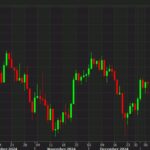This week is light in terms of economic events, which is typical for the period following the release of the U.S. NFP report. Much of the market activity this week is expected to be influenced by geopolitical events such as the conflict in the Middle East.
On Tuesday, Australia will release the minutes from its monetary policy meeting. Moving on to Wednesday the RBNZ will have its own policy meeting and later in the day, the Federal Reserve will release the minutes from the FOMC meeting.
Thursday’s focus will shift to the U.S., with the release of important data on CPI and unemployment claims.
On Friday, the U.K. will report its m/m GDP figures, while Canada will publish employment change data and the unemployment rate. In the U.S., releases will include the PPI m/m, along with the preliminary UoM consumer sentiment and inflation expectations reports.
At this week’s RBNZ meeting, analysts are divided on whether the Bank will implement a 25 bps or 50 bps rate cut with more favoring the 50 bps scenario. Inflation in New Zealand has shown continued progress, and the Bank is confident that it will return to its desired target as there are no pressures.
Economic growth has been slowing, and the labor market is under strain, indicating that an easing cycle would be welcomed.
After the latest U.S. jobs report exceeded expectations, all attention is now focused on this week’s inflation data. While the decline in overall inflation has been bumpy, headline inflation y/y came in 2.5% in August, driven by deflation in the goods sector and a general softness in food and energy prices.
The consensus is that headline inflation will drop from 2.5% to 2.3%, but the market remains divided on whether the Fed will cut rates by 25 bps or 50 bps at the next meeting, particularly in light of the recent strong jobs data.
In the U.K., the consensus for the GDP m/m is 0.2% vs 0.0% prior. This data will provide more information about the state of the economy, and it appears that an improvement is underway. Analysts believe the near-term outlook is positive.
Regarding monetary policy, the BoE governor hinted that if inflation data shows favorable developments, a more aggressive easing cycle could be possible.
In Canada, the consensus for employment change is 33.1K vs 22.1K prior, while the unemployment rate is expected to rise from 6.6% to 6.7%. Analysts from Royal Bank of Canada suggest that the recent increase in the unemployment rate is likely due to longer job search times, particularly among students entering the job market, rather than widespread layoffs. That said, job vacancies have decreased over 25% compared to a year ago and are expected to go down further.
The analysts also point out that, even though employment has risen, it is not sufficient to keep pace with the country’s rapid population and labor force growth. Meanwhile, the BoC is concerned that the economy could deteriorate more than needed, which could push inflation under the 2% target.
In the U.S., the consensus for the UoM consumer sentiment is 70.5, up from the previous 70.1. This increase could be fueled by the Fed starting its easing cycle. According to Wells Fargo analysts, consumers remain concerned about the future state of the economy, with the reading well below the 90-100 range seen from 2015 to 2019.
Another factor contributing to this uncertainty is the upcoming U.S. election, and this sentiment is likely to persist until the election results are clear.
Wish you a profitable trading week.















